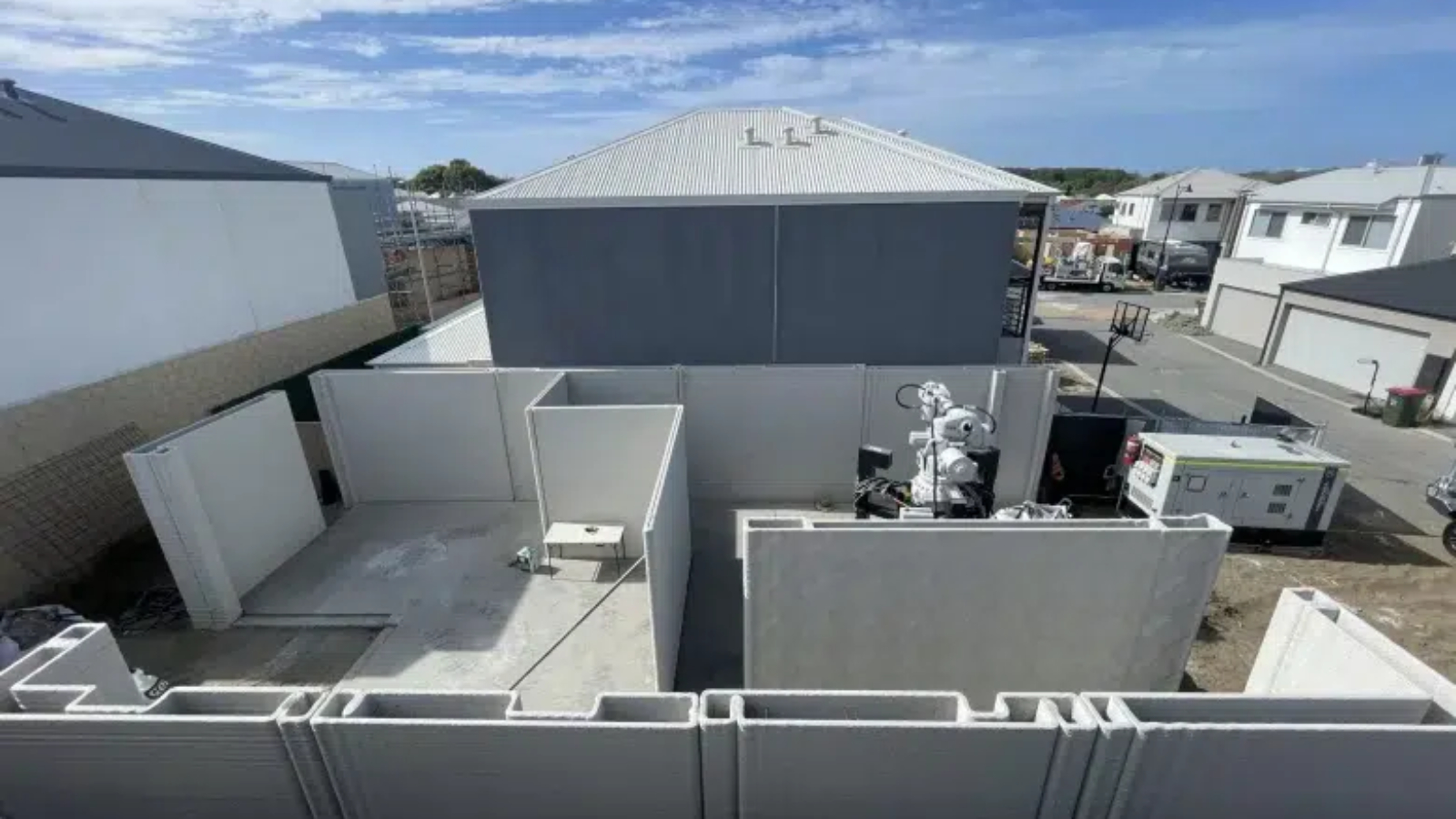Contec, a construction company based in Western Australia, recently acquired a concrete 3D printer from CyBe Construction, a Dutch developer of 3D printing technology. Contec has already printed all the walls of its first two-story house, located in Tapping, and aims to rapidly scale up operations.
“This innovation addresses some of the biggest challenges in the construction industry, from labor shortages to rising costs,” said Mark D’Alessandro, Founder of Contec Australia, who has nearly two decades of experience in the construction sector. “3D Concrete printing significantly reduces build times and offers a more sustainable alternative to traditional construction methods”.
Contec’s inaugural project highlights the promise 3D printing holds for Australia’s construction sector. Located in Tapping, in Perth’s northern suburbs, the project stands out in a subdivision characterized by numerous incomplete homes – demonstrating the efficiency and speed advantages of 3D printing technology.
Manufacturing on Demand
Contec’s approach has attracted considerable attention, prompting visits from multiple radio and TV stations within weeks of the project’s commencement. By hosting industry experts such as architects, builders, and engineers at the site, Contec is effectively showcasing how 3D printing technology can address Australia’s persistent housing shortage.
Upon installing the printer, CyBe conducted an intensive two-week training program. Trainees then went on to print all 15 walls for the 155m² Tapping home in just 10.5 hours of active printing. Weeks later, the team assembled the midfloor and completed the second floor’s walls within 18 hours.
Beyond remarkable speed, the method offers substantial cost savings and environmental benefits. Successfully printing outdoors without protective tents – even at temperatures up to 42 degrees – highlights its adaptability to Australian conditions.
“With this technology, we’re setting a new benchmark for construction,” said Mark. “It’s faster, cleaner, more sustainable, and versatile enough to handle everything from housing to large-scale infrastructure. We’re excited to see how it will transform building in WA.”
You might also like:
Largest 3D printed villa ViliaSprint² unveiled by PERI and Holcim in France: Built using the BOD2 construction 3D printer from COBOD, ViliaSprint² shows that 3D concrete printing is no longer a speculative experiment but a tangible construction reality. In tandem with Plurial Novilia, this undertaking introduces an epochal shift in public housing fabrication.
* This article is reprinted from 3D Printing Media Network. If you are involved in infringement, please contact us to delete it.
Author: Edward Wakefield




Leave A Comment